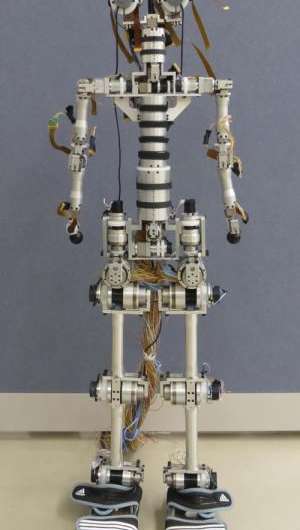Figure 1: The gait of the walking robot is greatly improved by a computer model that mimics the tacit learning of animals. Credit: Shingo Shimoda, RIKEN BSI–TOYOTA Collaboration Center
Fully autonomous robots could transform the way we live, but so far such machines remain beyond the reach of our most advanced technologies. Existing robots are generally limited to performing simple, well-structured tasks in controlled environments. To overcome unpredictable natural obstacles, robots must be able to learn from their environment and adapt their behavior in the same way as humans.
Shingo Shimoda and colleagues from the RIKEN BSI–TOYOTA Collaboration Center have now greatly improved the walking skill of a two-legged robot by programming the robot to adapt its posture in response to cues from the environment1.
Having previously worked at the Japan Aerospace Exploration Agency (JAXA), Shimoda has long been interested in how robots can obtain the skills needed to explore natural environments on Earth and other planets. "I wondered why small animals like squirrels can move around and find food in a natural environment but robots cannot, even with great computing power," he says. "The control principles of biological systems offer important clues that we can use to implement the same adaptability in robots."
For a robot to be adaptable, it must have regulatory systems of integrated components that work together in response to the environment, just like proteins or neurons in the human body. Shimoda's team developed a 'tacit learning' scheme that enables the regulatory system in a robot to tune primitive, reflexive actions into more sophisticated, useful behavior. A computer model simulates the natural process based on interacting code structures called variable threshold neurons, achieving control of the 36 movable joints in the team's walking robot (Fig. 1).
For every movement of the robot, the researchers specified certain joints that were strictly controlled to obtain an objective, for example the swinging hip of the leg that was stepping forward. The computer model then adjusted other joints, such as those of the supporting leg, to an optimum configuration that kept the robot standing and minimized its energy consumption.
In their first trial on a smooth laboratory floor, the robot fell down, but after around 10 minutes the motion was sufficiently tuned to keep the robot walking at over 7 centimeters per second. The robot was also able to adapt its walking gait to walk on natural turf and up slopes.
Shimoda believes that this same tacit-learning scheme could be applied to help robots interact with humans. "One important application would be prosthetic arms that can automatically move in response to the motions of the remaining joints," he says.
More information: Shimoda, S., Yoshihara, Y. & Kimura, H. Adaptability of tacit learning in bipedal locomotion. IEEE Transactions on Autonomous Mental Development 5, 152–161 (2013). DOI: 10.1109/TAMD.2013.2248007
Provided by RIKEN
























